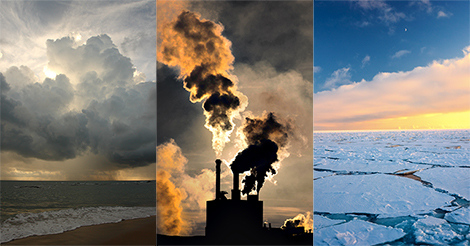Global Warming: Causes, Effects, and Solutions – The term “global warming” describes the gradual rise in the planet’s average surface temperature brought on by the buildup of greenhouse gases in the atmosphere. These gases, such as carbon dioxide and methane, trap heat and lead to a rise in temperature, disrupting the planet’s climate patterns.
Causes of Global Warming
There are multiple factors contributing to global warming, including: daftar premium303
- Burning Fossil Fuels: The combustion of fossil fuels, such as coal, oil, and natural gas, for energy production releases substantial amounts of carbon dioxide into the atmosphere.
- Deforestation: Carbon dioxide is greatly absorbed by trees. The removal of forests reduces the planet’s capacity to sequester carbon dioxide.
- Industrial Processes: Industrial activities release various greenhouse gases, including methane, which is emitted during livestock production and certain industrial processes.
- Agricultural Practices: The use of fertilizers and the management of livestock contribute to the release of potent greenhouse gases like methane and nitrous oxide.
- Waste Management: Improper waste disposal, particularly in landfills, leads to the emission of methane, a potent greenhouse gas.

The Main Cause of Global Warming
While multiple factors contribute to global warming, the burning of fossil fuels is recognized as the primary driver. Carbon dioxide released from the combustion of coal, oil, and gas is a major greenhouse gas, responsible for trapping heat in the atmosphere and leading to the greenhouse effect.
Effects of Global Warming
Wide-ranging consequences of global warming include:
- Rising Temperatures: Average global temperatures are increasing, leading to heatwaves and altered weather patterns.
- Melting Ice and Glaciers: Rising temperatures cause ice sheets and glaciers to melt, contributing to rising sea levels.
- Sea Level Rise: Melting ice and the expansion of seawater due to warming lead to sea level rise, threatening coastal communities.
- Ocean Acidification: Increased carbon dioxide levels are absorbed by oceans, leading to more acidic waters that harm marine life.
- Extreme Weather Events: Global warming intensifies extreme weather events like hurricanes, droughts, and heavy rainfall.
Challenges Posed by Global Warming
Global warming presents significant challenges for the environment, society, and economies. Some pressing issues include:
- Environmental Degradation: Loss of biodiversity, habitat destruction, and ecosystem disruption.
- Human Health Risks: Heatwaves, diseases, and worsened air quality pose health risks to populations.
- Food Security: Changes in climate affect crop yields and disrupt food production, leading to potential food shortages.
- Displacement: Rising sea levels and extreme weather events can force communities to relocate due to increased flooding and loss of habitable land.
Potential Solutions to Global Warming
Addressing global warming requires collective efforts and sustainable solutions:
- Transition to Renewable Energy: Shifting from fossil fuels to renewable energy sources like solar, wind, and hydropower reduces carbon emissions.
- Afforestation and Reforestation: Sequestering carbon dioxide from the atmosphere is made easier by planting trees and restoring forests.
- Energy Efficiency: Improving energy efficiency in buildings, transportation, and industries reduces overall energy consumption.
- Sustainable Agriculture: Implementing sustainable agricultural practices can reduce methane emissions from livestock and promote soil health.
- International Agreements: Global agreements like the Paris Agreement aim to unite countries in their efforts to limit global temperature rise.
Conclusion
Global warming is a critical issue that demands urgent attention. Understanding its causes, effects, and challenges is essential for making informed decisions to mitigate its impact. By adopting sustainable practices, transitioning to clean energy sources, and implementing policies to reduce greenhouse gas emissions, individuals, communities, and nations can work together to address the global warming crisis and create a more sustainable future for generations to come.